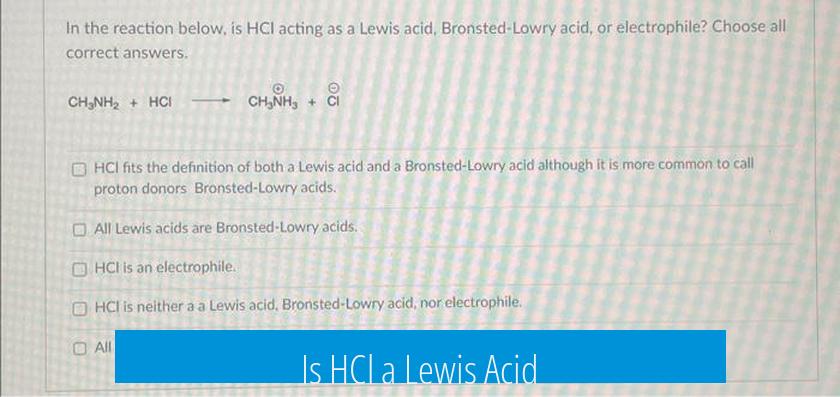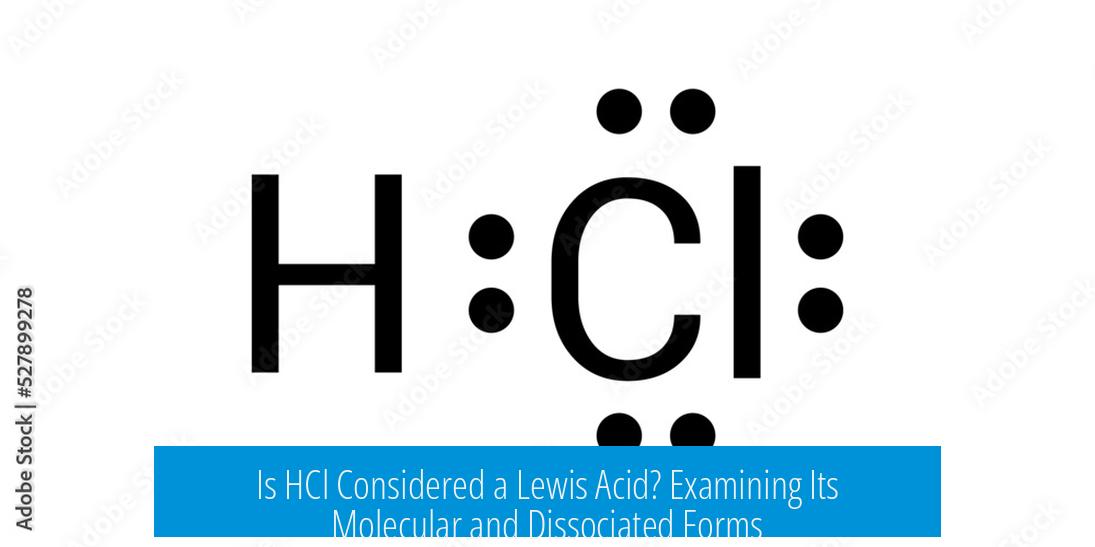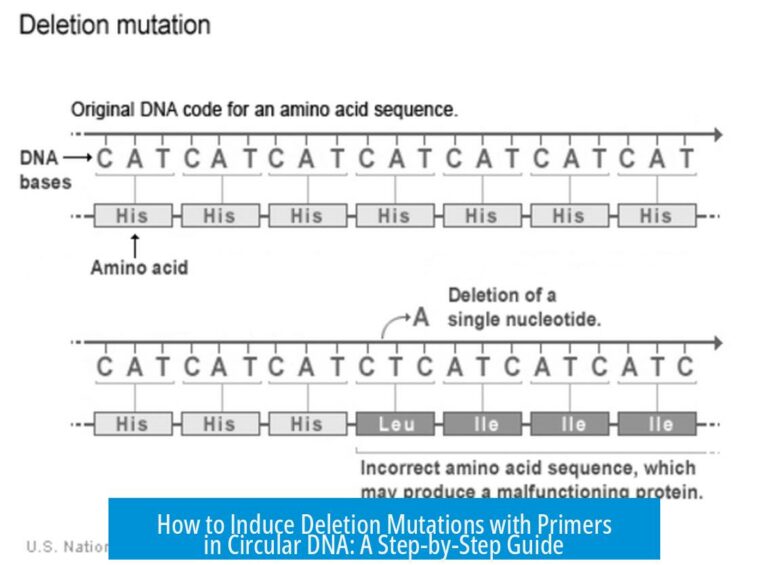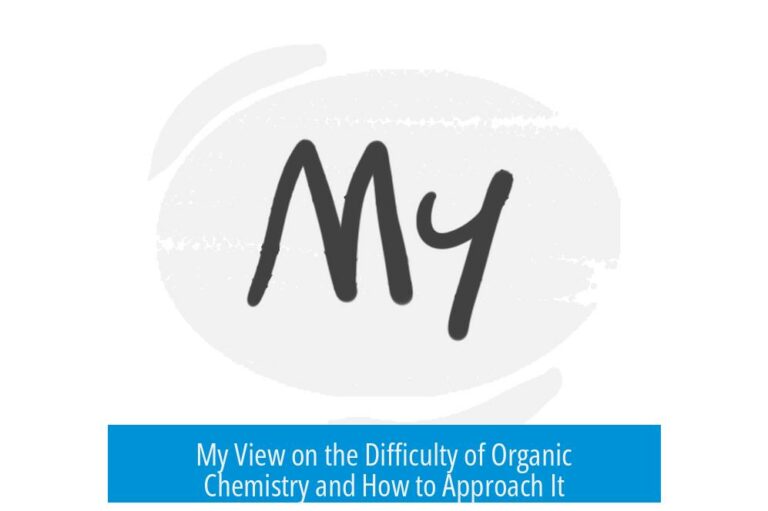Is HCl a Lewis Acid?

HCl itself, as a molecular compound, is not a Lewis acid, but the proton (H+) released when HCl dissociates can act as a Lewis acid by accepting electron pairs. This distinction is important for correctly classifying hydrochloric acid in different chemical contexts.
Understanding Lewis and Brønsted Acids
HCl is well-known as a strong Brønsted acid because it donates protons (H+) readily in aqueous solution. By definition, all Brønsted acids are Lewis acids since donating a proton inherently involves accepting an electron pair. However, not every Lewis acid is a Brønsted acid. This subtlety affects how we interpret HCl’s acidity.
Molecular HCl vs Dissociated Species
In its undissociated form, HCl does not accept electron pairs and thus does not meet the strict definition of a Lewis acid. The molecule is electron-rich and lacks electron deficiency necessary for Lewis acidity.
When dissolved in water, HCl dissociates into H+ and Cl− ions. The proton (H+), though not existing freely in solution, associates with water molecules to form hydronium ions (H3O+). These ions accept electron pairs from bases, clearly exhibiting Lewis acid behavior. Therefore, it is the dissociation product, not molecular HCl itself, that acts as a Lewis acid.
The Role of Chloride Ion and Contextual Behavior
The chloride ion (Cl−) acts as a Lewis base, donating electron pairs rather than accepting them. In some specialized scenarios, chloride might interact with other species in ways that appear Lewis acidic, but these cases are rare and context-dependent.
Summary Table: HCl and Lewis Acidity

| Species | Lewis Acid Behavior | Explanation |
|---|---|---|
| Molecular HCl | No | Does not accept electron pairs; electron-rich molecule |
| Proton (H+) | Yes | Electron pair acceptor; forms hydronium ions in solution |
| Chloride Ion (Cl−) | No (Lewis base) | Electron pair donor, not an acceptor |
Key Takeaways
- HCl as a molecule is not a Lewis acid because it cannot accept electrons.
- HCl dissociates in water to release H+, which is a Lewis acid by definition.
- Free protons do not exist alone in solution but are bound to solvent molecules like water.
- All Brønsted acids are Lewis acids in theory, but practical classification depends on chemical context.
- Chloride ion acts as a Lewis base, donating electrons rather than accepting them.
Is HCl considered a Lewis acid in its molecular form?
No. Molecular HCl cannot accept electrons and thus is not a Lewis acid in its intact form.
Can the proton from HCl act as a Lewis acid?
Yes. The H+ ion produced after dissociation can accept electron pairs, fitting the Lewis acid definition.
Does free H+ exist in solution when HCl dissolves in water?
No. Free protons do not exist alone; they bind to water molecules forming hydronium (H3O+).
Is HCl both a Brønsted and a Lewis acid?
Technically yes. All Brønsted acids, like HCl, can be considered Lewis acids by definition, but context matters.
Does the chloride ion in HCl act as a Lewis acid?
No. Chloride ion (Cl-) acts as a Lewis base since it donates electrons rather than accepts them.





Leave a Comment